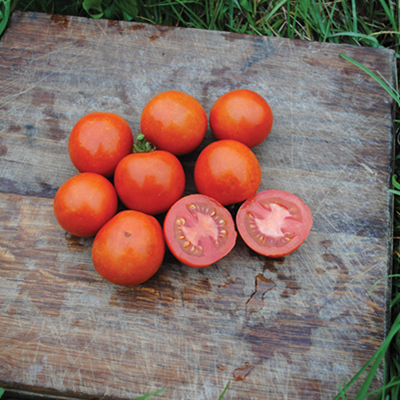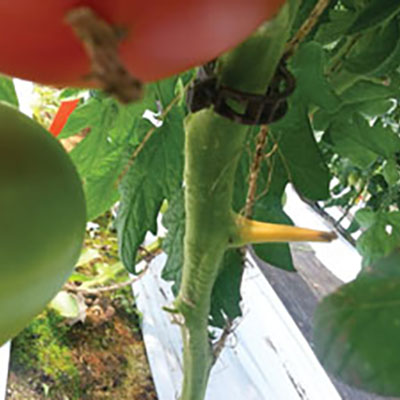By Katherine Creswell
To get right to the point, one of my goals as a farmer, and as a person who wants to do something useful with her life, is to make the local, sustainably produced food that we all sell normal. By that, I mean available where the vast majority of Americans shop: grocery stores. As I see it, polished, professional products and service that sells itself is the most direct way to that goal.
Another clear goal of ours is to meet our income targets while preserving free time for other pursuits. To this end, I’ll explain what we’re doing at Moose Meadow Farm in North Idaho to professionalize our farm business, and how that helped us to more than double our gross income from year one to year two while working about the same hours. I’m going to argue that in this day and age, a polished image, top-notch service, and highest quality produce will help sell local farm products and help us all achieve our goals.
A brief overview
The summer of 2018 was our second full summer in business. We ran a 75 member free choice/buy down CSA that made up about 50% of our summer income. We also sold to eleven restaurants and three natural foods stores, all within 75 miles of the farm, which made up the other 50% of our summer income. In the winter, November through April, we sell fresh produce directly to the public through our website that generates about 25% of our total annual income.
We are a farmer/owner couple who make up our entire workforce. We worked an average of 62 hours per week each this season from May through September; way too much for our liking! But we increased our income by 110% from year one to year two (from $42,000 to $90,000), while increasing cultivated land by about 50%, (we cultivate a total of 3/5 of an acre). Though we’ve made some big mistakes this year, enough went right to give us a solid season. We attribute that success to professionalizing every aspect of our production and sales to the best of our ability.
Step one: whole farm vision
At the end of our first season, we took stock of where we were as a farm business and decided to take three conscious leaps of faith to get us closer to where we want to be. Those leaps of faith have helped us have a good year, but also taught us some extremely valuable lessons that will be useful for the rest of our careers. They were: jumping on the clam-shelled salad greens bandwagon, selecting three crops to focus on for wholesale, and tripling the size of our CSA. Though risky, we saw these moves as the foundation to the type of farm we want to have. I’ll explain each of these enterprises in turn.
Clam-shelled salad greens
We consider ourselves lucky in our region to be the only certified organic producers attempting to grow salad greens in clamshells for grocery stores. This year, we are producing spring mix (we use Salanova), spinach and microgreens in clamshells. Once we got over our qualms with the packaging, which were huge, we found it easy to sell our products to three natural food stores in the region who were currently carrying Organic Girl or Taylor Farms (certified organic salad green products that are distributed nationally).
Our products look professional, and easily displace the nationally distributed salad tubs on the shelves because they are similar in size/volume and shape. Consumers already used to clamshells don’t have to go out on a limb to try our products; they are used to the clamshell concept already. This places our unique, high quality, locally and sustainably produced product squarely in the normal category for them. When they get it home and find that it tastes better (arguably) and lasts longer than the non-local products they were buying, that’s a win!
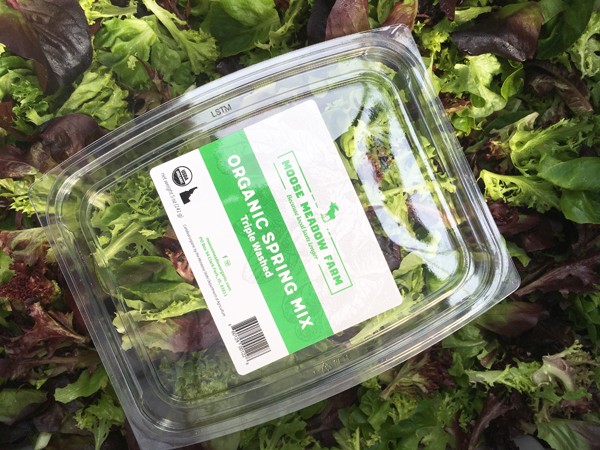
Moose Meadow Farm’s salad greens in retail packaging. Check local laws for labeling requirements for your labels. The term “triple washed” means different things in different places.
To make these products come together, we needed the packages themselves, a respectable label, barcodes, a production plan that matched projected sales, and a clear communication plan between the produce managers and us. For one store, Natural Grocers, we also needed liability insurance that we didn’t previously have but were able to obtain simply and at low cost through the National Farmer’s Market Vendor Liability Insurance Program. Though none of the grocery stores that we sell to require GAP certification, it is quite possible that they will in the future. We do not have GAP certification however we have a food safety plan that we follow and make that known to our buyers.
Packaging
Based on conversations with produce managers in the 2017 season, we settled on 5 and 10 ounce clamshells of salad greens and 2.5 ounce clamshells of microgreens to match what they were already buying from their distributors. We searched high and low, did price and environmental impact comparisons, and finally settled on packaging from EasyPak. We had pallets of their 5oz and 10oz #1 PET recyclable salad tubs delivered to the farm in early April.
At this volume, our unit cost came to $0.35 per 5oz and $0.55 per 10oz, well within our acceptable range. Buying in bulk means we have more inventory on hand than we’d like, but the upside is that we don’t have to restock mid season, and our unit cost was lower at that volume. We are able to buy our microgreens clamshells from a local restaurant supply store that carries the Genpak containers we prefer, and we only need to keep about one month’s supply in our inventory at a time. The microgreens containers cost $0.15 each.
Labels
To generate a respectable label, we first needed to know the label requirements for our area. These were easy to find by searching the State Health Department. We then made sketch drawings of our ideas, but not being graphic artists, we needed help. Fortunately, my brother-in-law works for a design firm in Portland, Oregon, and generously offered his colleague’s time designing for us. We fully recognize what a windfall this was, as this type of design work can cost anywhere from $1,000 to $2,000!
What we ended up with is the single color, glossy, simple but professional labels pictured. We were thrilled with them, but have a few tweaks to make for the next printing, namely adding our names, ingredients, and “soil grown”, which is an increasingly important part of our marketing.
We wanted our total packaging cost to be less than $0.75 per package, so we had a ballpark figure to shoot for when looking for a label printer. After calling a couple and asking for quotes, we settled on Eagles Printing in Michigan for no other reason than they were incredibly helpful and their quote came to $0.06 per label, which made our 5oz packaging total $0.41 each, our 10oz packaging total $0.61 each, and our microgreens packaging $0.21 each.
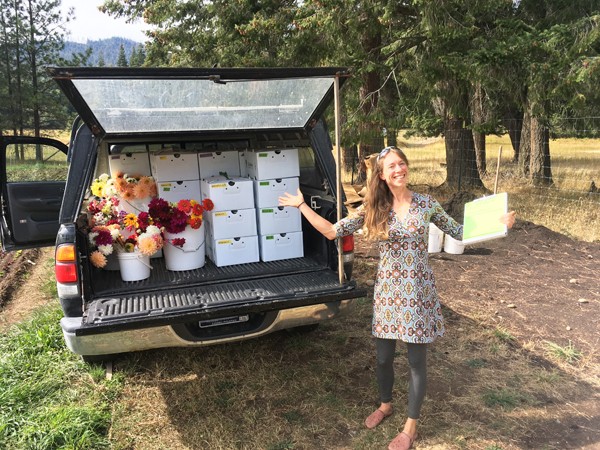
The author getting ready for CSA distribution. All photos courtesy of the author.
Barcodes
Based on conversations with a few produce managers, we quickly learned the importance of barcodes. While some produce managers will buy from you if your products don’t have them, in our case Natural Grocers would not. It was an easy decision to put barcodes on all of our labels. A quick Google search will yield dozens of options for purchasing bar codes for fairly cheap, however there is only one place where you can buy truly unique barcodes that are guaranteed to be trouble free (at least in our experience) and that is GS1-US.
For an initial $250 and annual $50 fee, we purchased 10 unique barcodes. In a simple process of paying and downloading, we had our unique barcodes in .png files that we shared with our designer to include on our labels. Here’s a piece of advice we learned from our label printer: the barcode background has to be completely blank so as not to interfere with the scanner at the grocery store checkout counter.
Production plan
Coming in to 2018, our microgreens and spring mix games were strong, but we planned to figure out our spinach production on the fly. Our production plan needs some tweaking, but overall we had high quality lettuce and microgreens to sell every week of the summer, and a solid run of spinach while the stars aligned.
We seeded Salanova three out of every four weeks to ensure a steady supply, and carefully planned our fall stockpiling dates to ensure continuous production through the fall and winter. We continually adjust the number of microgreens trays seeded to meet fluctuating demand, and pay careful attention to day length and light levels so we can accommodate differing days to maturity of our entirely brassica microgreens mix.
If we were not trying to meet the high standards of grocery store produce managers, our stress levels might have been lower this year, but we wouldn’t have had the motivation to nail down our exact production schedule to better prepare us for next year.
While we had some hiccups on the production side, we only sent the highest quality produce out the door, even when that meant leaving an entire bed unharvested due to slight, but noticeable, imperfections. The final product was nothing short of professional. We’re using the mistakes we made this year as a jumping off point for a smoother, more profitable season next summer.
Communication
As simple as it may sound, our number one goal of selling wholesale is to meet the needs of our buyers. Many grocery store produce managers are not used to buying directly from local producers, so working with us is not normal for them. For lack of another example to follow, we try to provide the same level of service as they receive from their other distributors, thereby normalizing the process.
We call our produce managers (and chefs, too) at the same time each week, outside of their busy hours. We ask them what they need and let them know when we’ll deliver. We then show up in clean clothes, when we said we would, and check in to make sure we’re bringing what they expected. We also hand them a printed invoice with our farm name and logo on it.
We have found that mimicking the larger distributors to the best of our ability, while also exceeding expectations of service where possible is easy for us to do and helps us maintain good relationships with the accounts that we value. A tidy, professional appearance and service equals produce managers who don’t mind doing business with us, which equals more of our local products on the shelves and more consumers thinking that’s normal and letting produce managers know how much they like our local products.
The big three crops
We consider our farm to be diverse, as we grow about 35 total crops to fill CSA and wholesale orders combined, however we chose three crops to be our bread and butter crops because we know how to produce them efficiently, they are profitable for us, we enjoy them, and by growing a lot of them we can improve our methods quickly. Our big three crops are spring mix, microgreens and heirloom tomatoes/cherry tomatoes.
It felt like too big a risk (and probably always will) to only grow these three crops, but they make up about 60% of our cultivated space and 75% of our income. When we started our farm in the fall of 2016, we were overwhelmed with the growing and marketing options we perceived. Lettuce heads for wholesale? Rhubarb and asparagus for early spring sales? Strawberries and raspberries in high tunnels?
Narrowing down those options seemed like a necessity, and fortunately we had enough experience to know how to grow these three crops profitably. The piece we set out to clarify this season was how to market them, but we’re off to a good start having sold all that we were able to produce, while not yet meeting demand.
Small farm diversity is paramount, especially for a new farm business. Things will inevitably go wrong, so having other crops to fall back on makes sense. However selecting a few crops to focus on means that we are more rapidly perfecting our production methods with these crops, which will help us produce more of them, find more outlets, and make them familiar staples in shoppers’ grocery carts.
Furthermore, with these three crops occupying such a high percentage of our business, we are able to tune our production systems to them and dramatically reduce the amount of time it takes to produce them. To extrapolate, our ability to efficiently produce and market around 75% of our income keeps our hours worked in check.
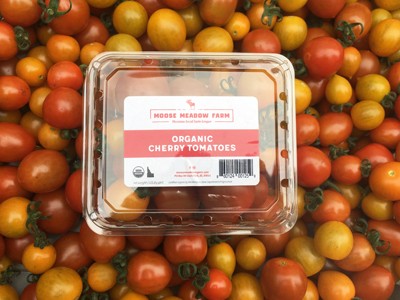
The CSA
In an effort to mitigate our risk and not go 100% into wholesaling, and equally because we enjoy feeding and interacting directly with our community, we ran a CSA for our second year, this time expanding it from 20 full share equivalents (30 people) to 60 full share equivalents (75 people). To sell more shares and increase retention, we wanted to polish and professionalize this market stream as well. We were well aware that we would be unprepared for some aspects of this CSA jump in size, but (common theme!) we were confident in our ability to figure it out.
In 2017 we used CSA management software to run our program. We decided against it in 2018, for the plain reason that we couldn’t find software that we liked in time for the season to start.
Instead, we set up a Square online store and issued our members Square gift cards with their CSA credit loaded onto them. Each week, they shop for whatever they want in our store until their credit runs out. By combining online shopping, which is familiar to the vast majority of our members, with a grocery store experience (free choice vs a standard box), our CSA customers don’t have to venture too far outside of their comfort zones to become members.
We fully recognize that tools like Harvie and Farmigo exist that are more professional and polished than our homespun CSA management, and we will almost certainly use a CSA management software program in the future. In lieu of a professional program, however, we made a point to offer top-notch customer service to our members.
This is time consuming and can be stressful, but we know that our customers have endless options when it comes to buying produce and we want them to stick with us. We want members to have an experience they can equate with grocery shopping, only with higher quality produce, better service and a sense of community.
To further polish our CSA program, we offered business drop offs and purchased Crop Boxes, an upgrade from plastic lined paper bags that we used previously. Crop Boxes are white, opaque polycarbonate boxes in various volumes that fold down like cardboard, but can be washed and reused countless times.
Though it took quite a lot of figuring to be able to pull the trigger on the purchase at around $10 per box and two needed per member, we couldn’t be happier with them and members appreciate them as well. At the end of our two-hour distribution window, produce inside is still cold and not squished. Logistically, we couldn’t run our system without them, as they are stackable in our small delivery truck and are easy to fill. They make a statement too, eliciting comments from non-member passers by at every distribution.
One of our favorite sayings, attributed to General George Patton, is “make a decision and do it like hell.” If you have been following along our small farm’s start up journey, you will be familiar with our decision making processes that have brought us to where we are today. We take calculated risks and don’t attempt anything half-heartedly. Farming is our dream job but it is still that: a job; a means to an end of making a living. No matter what direction we take in the future, a polished, professional approach will follow us. After all, we believe this will help normalize local food and lead to easier sales and higher profits for the farmer. Who doesn’t want that?!
After farming in Maine for many years, Katherine Creswell and Spencer Nietmann started Moose Meadow Farm in Clark Fork, Idaho in 2016. Follow them on social media and contact them at [email protected]. They love hearing from you!

.png)




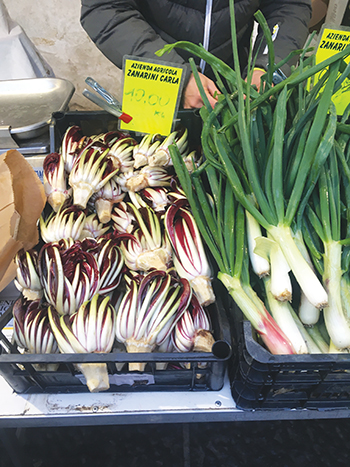 Plan now for a crop from stored roots next winter
Plan now for a crop from stored roots next winter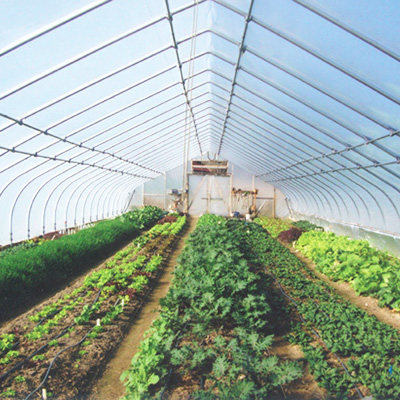
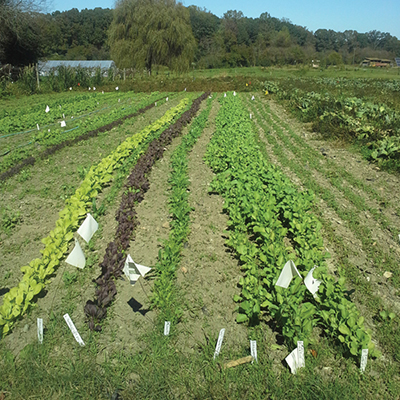


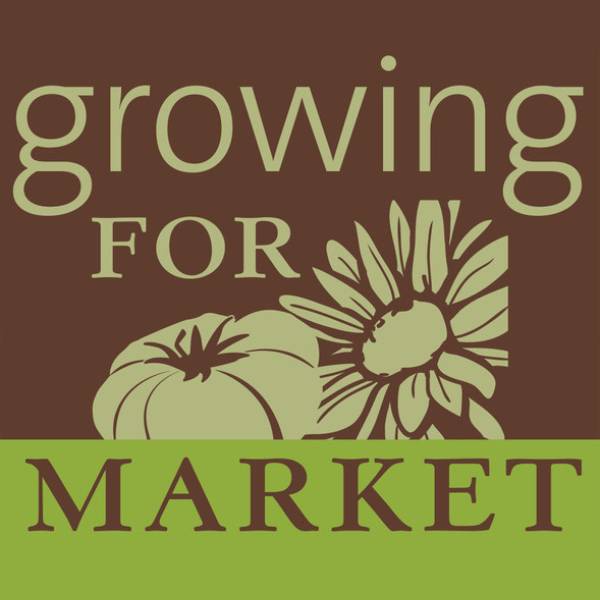

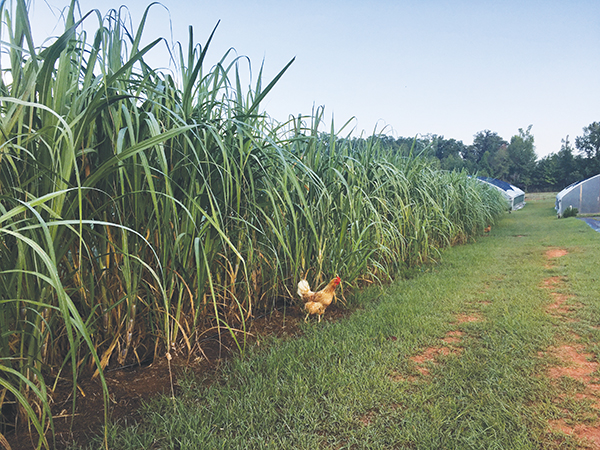 Julia Asherman appeared on my radar screen a number of years ago because she was a regular presence at the Southern Sustainable Agriculture Working Group conferences where I’ve spoken many times. Colleagues pointed her out to me as a person to watch because she was tough and smart and she was going to make something of herself as a farmer. We became conference buddies. So, when I had the good fortune to get invited to speak at the Georgia Organics Conference in Athens this winter, I knew right away I wanted to take that opportunity to visit Julia at her place, Rag & Frass Farm in Jeffersonville, Georgia.
Julia Asherman appeared on my radar screen a number of years ago because she was a regular presence at the Southern Sustainable Agriculture Working Group conferences where I’ve spoken many times. Colleagues pointed her out to me as a person to watch because she was tough and smart and she was going to make something of herself as a farmer. We became conference buddies. So, when I had the good fortune to get invited to speak at the Georgia Organics Conference in Athens this winter, I knew right away I wanted to take that opportunity to visit Julia at her place, Rag & Frass Farm in Jeffersonville, Georgia.


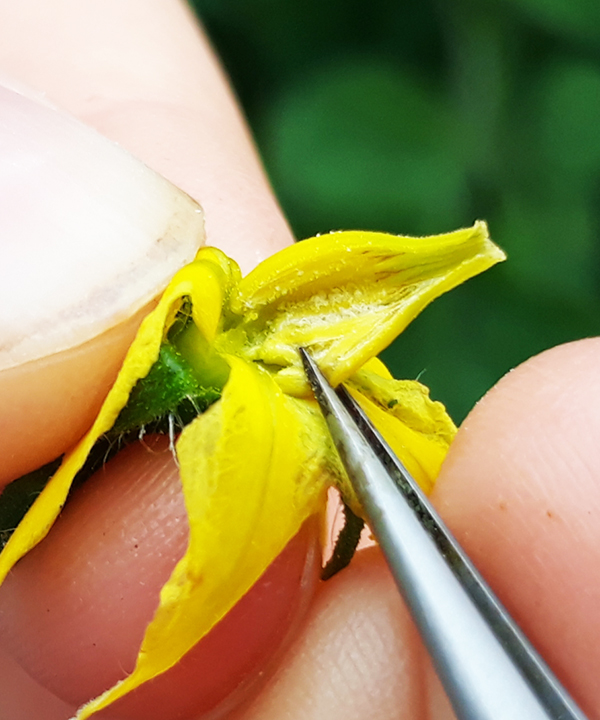 Farmer to Farmer Profile
Farmer to Farmer Profile